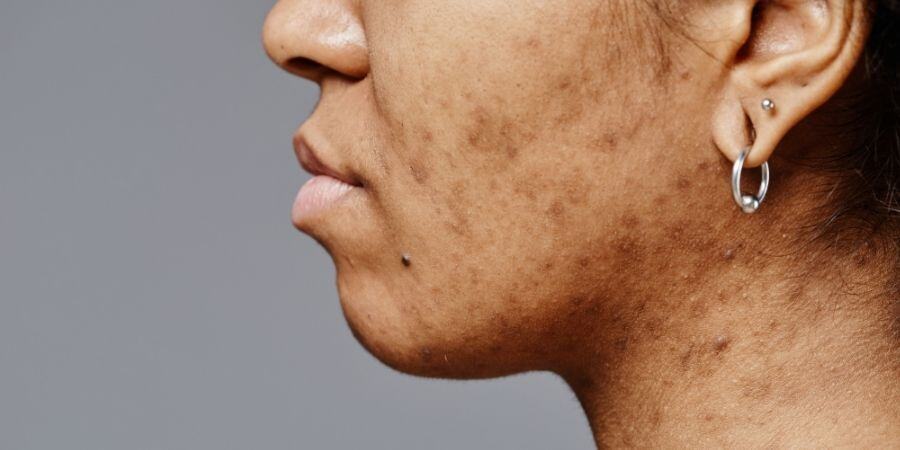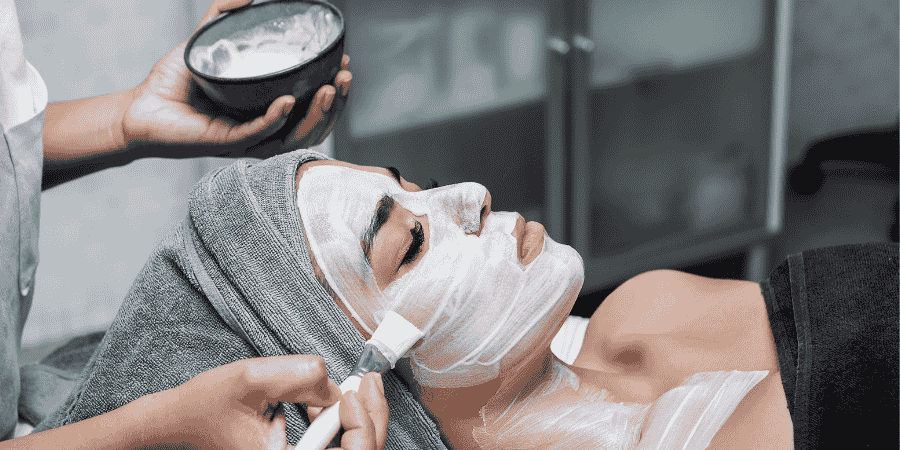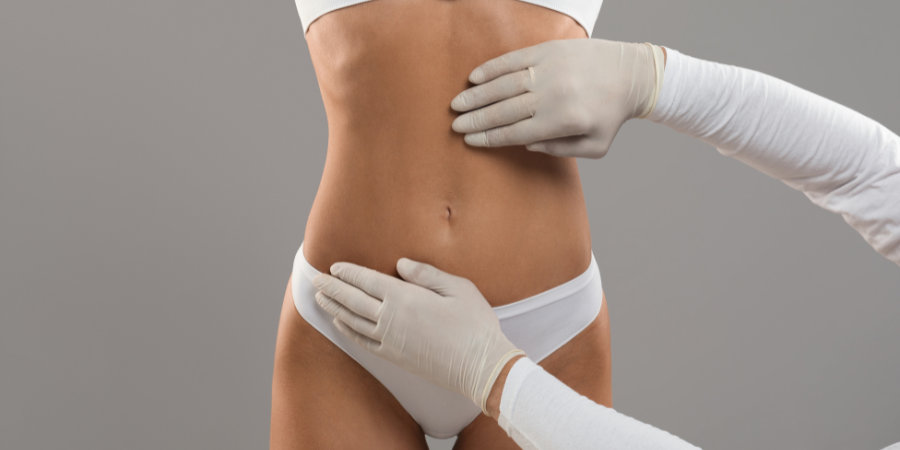Hyperpigmentation is one of the most common skin concerns, but it can often feel overwhelming to address without the right information. There are many types of hyperpigmentation, which are darker patches or spots on the skin, and it can occur not only on the face but also on the hands, chest, or other areas usually exposed to the sun.
Why do I have hyperpigmentation?
Hyperpigmentation occurs when the skin produces an excess amount of melanin, the natural pigment that gives skin its colour. This overproduction can result in darkened spots or patches, which vary in size and shape depending on the cause. While it’s often linked to sun exposure, there are several other triggers, including inflammation, hormonal changes and even certain medications.
One of the most important things to understand is that hyperpigmentation is common and affects people of all skin types. It’s not a sign that something is wrong with your skin, just that it might need a little extra care.
What type of hyperpigmentation do I have?
Not all hyperpigmentation is the same, and understanding the type you have will help us choose the right treatment. Here are some of the most common types:
Sun spots: These flat, dark areas typically appear on the face, shoulders, and hands, all areas that receive the most sun exposure. They’re a direct result of UV damage and tend to increase in number with age.
Age spots: Often confused with sun spots, these dark patches are associated with the natural ageing process combined with long-term sun exposure. They’re usually more numerous and larger in size.
Post-Inflammatory Hyperpigmentation (PIH): This happens after the skin has been inflamed or injured, such as following acne breakouts or eczema. PIH can appear as red, brown, or purple marks, depending on your skin tone, and may take many months to fade if left untreated.
Melasma: Melasma is typically triggered by hormonal changes, such as pregnancy or the use of hormonal contraceptives. It shows as large, symmetrical patches on the face, particularly on the cheeks, forehead, or upper lip. Sun exposure will make melasma worse, so protecting your skin is essential.
Hyperpigmentation is often misunderstood, which can lead to frustration when trying to treat it.
“Hyperpigmentation will go away on its own.” While some forms, like mild PIH, can fade over time, others like sun spots or melasma won’t disappear without targeted treatment.
“Only older people get dark spots.” Hyperpigmentation can happen at any age, particularly after sunburns, breakouts or hormonal fluctuations.
“Sunscreen isn’t necessary for dark skin tones.” This misconception can be very harmful. All skin tones can experience hyperpigmentation from sun damage, and SPF is important to prevent even more discoloration.
Preventing Hyperpigmentation
The best approach to hyperpigmentation is prevention.
Use sunscreen every day: A non-negotiable step, even on cloudy days! Sunscreen shields your skin from UV rays that create and worsen hyperpigmentation.
Avoid picking the skin: Blemish, insect bite, or irritation, picking can lead to inflammation and, consequently, post-inflammatory hyperpigmentation.
Incorporate antioxidants and other active ingredients into your skincare routine: Ingredients like vitamin C and retinol help to reduce the appearance of existing dark spots.
Our top picks for treating hyperpigmentation
Prevention is key, but there are effective treatments available for addressing existing dark spots. At The Hampton Clinic, we take a personalised approach to treating hyperpigmentation, ensuring that each plan suits your skin’s unique needs.
Chemical peels: Peels work by exfoliating the skin and encouraging cell turnover, which helps to fade dark spots over time. We use gentle yet effective formulas tailored to your skin type and condition.
Laser treatments: Lasers, such as ClearLift, target pigmentation at its source by breaking down melanin clusters beneath the skin. This non-invasive treatment also stimulates collagen production for a brighter, more even complexion.
Topical skincare products: Professional-strength products can help lighten hyperpigmented areas. Our team can recommend the best product options to incorporate into your routine.
Microneedling: This minimally invasive treatment uses tiny needles to stimulate skin renewal. It’s particularly effective for addressing post-inflammatory hyperpigmentation.
Addressing hyperpigmentation is a journey that requires consistency and patience. After completing a course of treatments, maintaining results often involves a dedicated skincare routine, regular sun protection, and occasional follow-up treatments.
At The Hampton Clinic, we’re here to support you. Our skin specialists will work closely with you to develop a personalised plan that aligns with your goals and budget, and help you achieve noticeable and lasting improvements.
Hyperpigmentation can feel frustrating, but with the right care and professional guidance, you can achieve a healthy complexion. If you’re ready to take the first step, book a consultation with us today, we’d love to help you on your journey to brighter skin!








